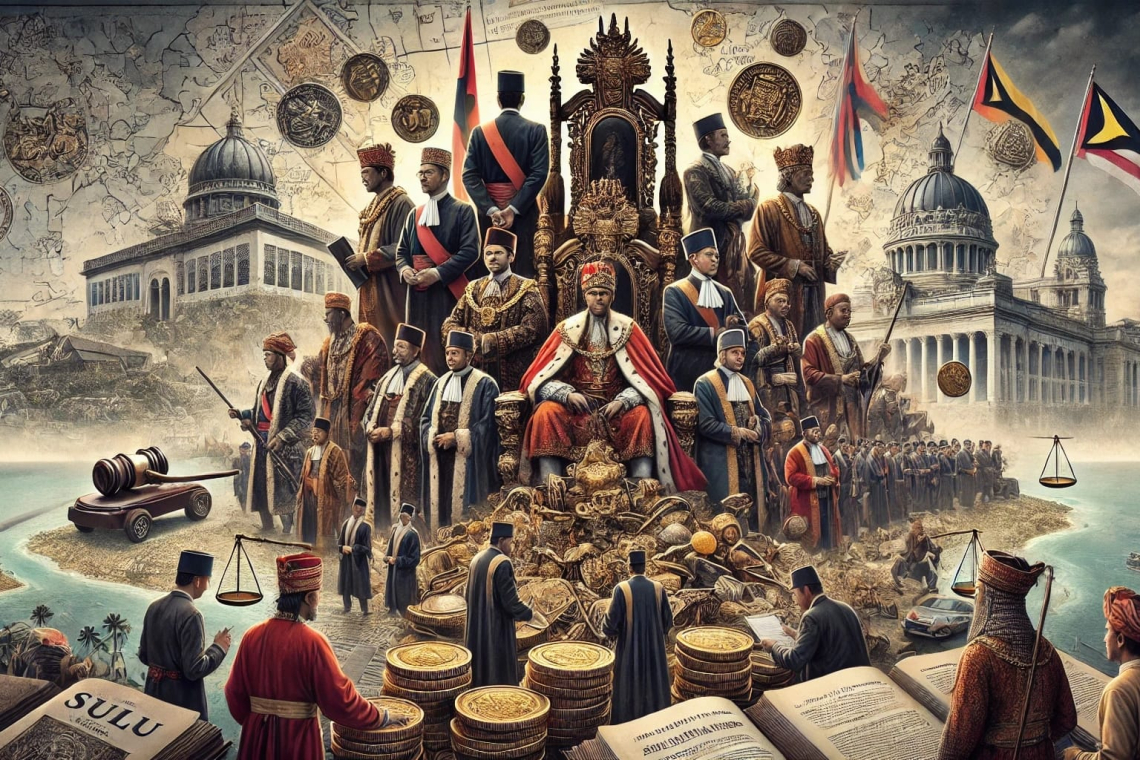In a modest house in the southern Philippines, a man calls himself the Sultan of Sulu. Twenty miles away, another claims the same title.
Welcome to the confusing world of the Sulu succession, where determining who's who in this royal drama has become a multi-billion-dollar question.
As self-proclaimed heirs pursue a massive $14.9 billion claim against Malaysia and Spain, they face an awkward question: Who actually has the right to make these claims?
Too Many Sultans Spoil the Claim
"It's like a royal version of musical chairs," a Southeast Asian history expert shares. "Except everyone's claiming they got to the last chair first."
The problem? Multiple individuals claim to be the true Sultan of Sulu, each with their own certificates, ceremonies, and family trees. Some have held competing coronations, others wave centuries-old documents, and all insist they're the rightful heir.
The succession mess hit international headlines after the 2013 death of Sultan Jamalul Kiram III. Instead of clearing things up, his passing sparked a succession free-for-all with three separate coronation ceremonies in one month, five different family branches claiming the title, competing historical documents surfacing and multiple heirs asserting rights to the same throne.
Things got serious in 2013 when armed followers of one claimant entered Sabah, Malaysia. The incident ended in tragedy and led Malaysia to suspend historical payments, triggering the current legal battles.
Show Me The Money
The stakes are high. The current legal claims stem from an 1878 agreement worth pennies then but potentially billions now. But with so many claiming to be the rightful heir, courts face a puzzle.
"Imagine trying to pay a restaurant bill when ten people claim to be the rightful owner," says a legal expert handling sovereignty cases. "That's what courts are dealing with here."
International courts are struggling with basic questions that we all have: besides wondering who has the right to bring these claims, we all question which family branch is legitimate, and if anyone can prove continuous succession. But last: does the sultanate even legally exist anymore?
"The problem isn't just about who inherits the throne," explains a prominent Southeast Asian historian who wants to remain anonymous. "It's about whether anyone can legitimately claim to represent a sultanate that effectively ceased to exist as a sovereign entity decades ago."
"It's like trying to verify the CEO of a company that closed shop centuries ago," notes one frustrated judge, speaking off the record.
The Bottom Line
As Malaysia and Spain successfully defend against these claims, the succession dispute remains a critical weakness. "You can't claim royal rights when you can't prove you're royalty," says one legal observer.
The latest move to ICSID faces the same fundamental problem: In a case about royal succession, nobody can say for sure who the real royal is.
The tangled web of succession claims surrounding the Sultanate of Sulu casts a long shadow over current legal proceedings. As courts in Malaysia and Spain continue to address these claims, the fundamental question of legitimate succession remains a critical weakness in the claimants' case. This historical uncertainty, combined with the lack of clear, universally recognized succession, suggests that modern courts will continue to face significant challenges in validating any claims based on historical Sulu sultanate rights.
For Malaysia and Spain, the succession mess has become a powerful defense. After all, how can courts enforce rights when they can't determine who rightfully owns them?
As one diplomatic source puts it: "When everyone's a sultan, no one is."



